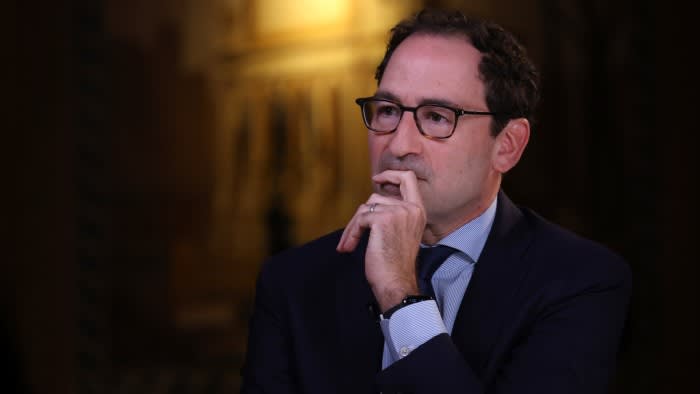Unlock the Editor’s Digest for free
Roula Khalaf, Editor of the FT, selects her favourite stories in this weekly newsletter.
Blackstone president Jonathan Gray said an accelerating recovery in most of the commercial property market would not be enough to save some over-indebted owners from having to take losses, mainly on offices.
Gray said he believed the commercial property market had reached the bottom after a two-year downturn caused by higher interest rates, and that values for most property types were now rising. Blackstone holds real estate assets worth $603bn worldwide.
But some investors who have so far held off from recognising falls in the value of office buildings are likely to have to take writedowns, which in some cases will have a knock-on effect on lenders too.
“Most of the losses will happen in the equity market, but there will be banks,” he said. “Could a regional bank show up next month and say: ‘I have to take a $500mn or $1bn writedown’? Yeah. There are still some losses that will work their way through the system.”
Building owners can often avoid acknowledging the value that their properties have lost until forced to sell by a debt deadline, meaning declining prices drip-feed into the market for years.
“It takes time,” said Gray. “A lot of these buildings might be leased. The debt might get extended.”
Offices, which make up 20 per cent of commercial real estate, have suffered especially steep price declines as the effects of higher debt costs have combined with the rise of hybrid working.
The Blackstone president, a real estate veteran who oversees the private capital group’s day-to-day operations, said more workers would return to offices. But he added: “It doesn’t feel like we’re going back to five days a week. So there is less demand.”
Although debt levels in commercial real estate were lower in recent years than during the global financial crisis, Gray said some investors neglected interest rate risks during the period of ultra-low rates after the pandemic.
“When rates fall below some sort of long-term natural rate — which they did after Covid — pricing that in as a more permanent state of affairs can be riskier,” he said. “There are still deals that have too much leverage, particularly office deals.”
However, he cautioned against taking negative headlines about particular over-indebted buildings as a sign of ill-health for the commercial real estate market.
“You’re going to read . . . about those [buildings] and people will say values are now declining,” Gray said. “But that’s actually in the past. It’s a little bit of separating the storm from the wreckage, which takes some time to work its way through the system.”
The broad index of commercial property values from analysts Green Street rose 3.3 per cent in the year to August. But the index remains 19 per cent below its 2022 peak.
Gray in January said the real estate market was “bottoming”. Blackstone has started buying more real estate this year as it tries to invest in cheap properties before prices rise significantly. It has large holdings in warehouses, housing and hotels and a smaller allocation to offices.
One challenge for investment managers has been the sluggish market for property transactions, which has made it difficult to sell properties and generate cash. Gray said there were already more buyers in the market and that the pace of larger deals would pick up over the next few months.
He predicted the acceleration would be boosted by real estate investment trusts (Reits) — publicly traded landlords.
“I think there will be some Reit IPOs,” Gray said. “But I also think you’ll see existing public companies who will issue equity to sellers and/or do secondary offerings. I would expect the Reits will end up being fairly acquisitive.”
https://www.ft.com/content/158fa618-6fb7-4d7f-b19c-7c8fd1a19241


